 | –≠–ª–µ–∫—Ç—Ä–æ–Ω–Ω—ã–π –∫–æ–º–ø–æ–Ω–µ–Ω—Ç: LM2879 | –°–∫–∞—á–∞—Ç—å:  PDF PDF  ZIP ZIP |
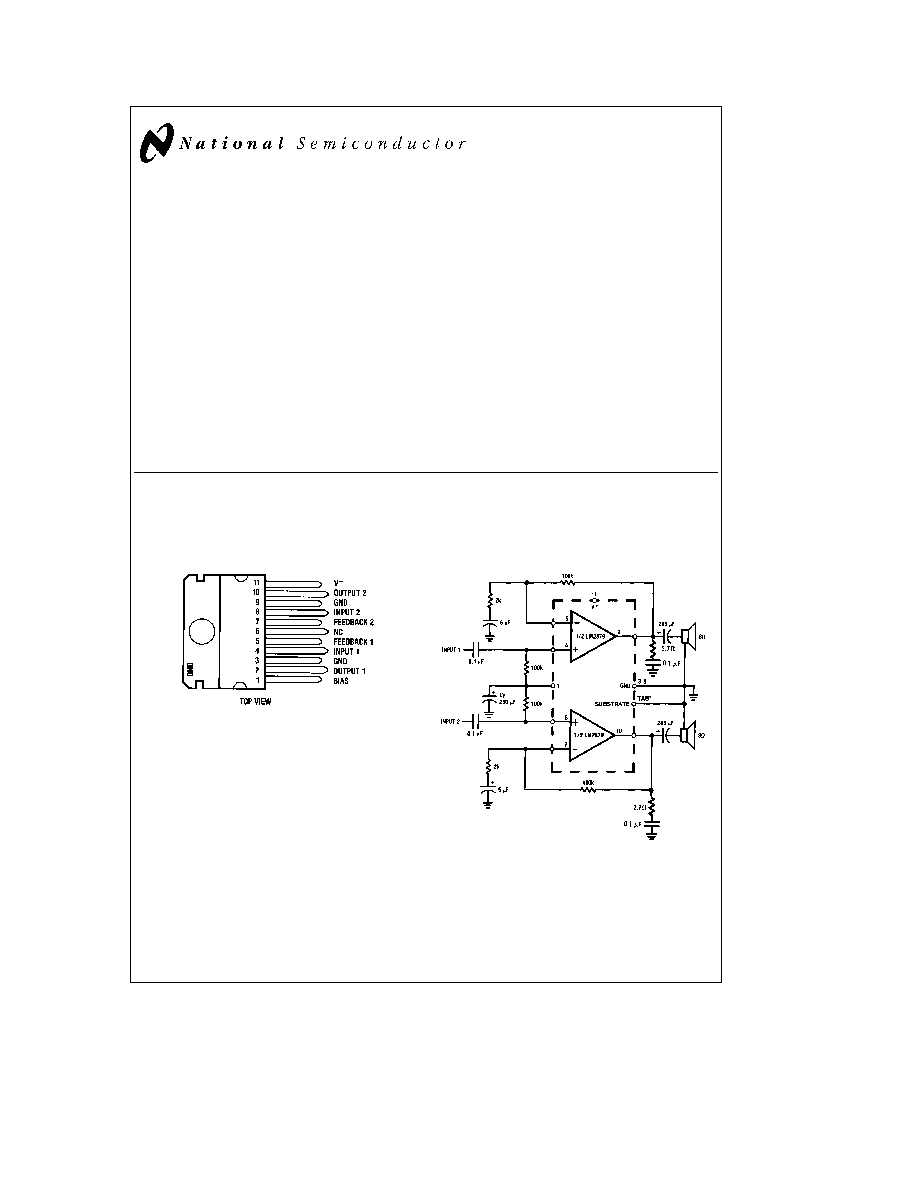
TL H 5291
LM2879
Dual
8W
Audio
Amplifier
February 1995
LM2879 Dual 8W Audio Amplifier
General Description
The LM2879 is a monolithic dual power amplifier which of-
fers high quality performance for stereo phonographs tape
players recorders AM-FM stereo receivers etc
The LM2879 will deliver 8W channel to an 8X load The
amplifier is designed to operate with a minimum of external
components and contains an internal bias regulator to bias
each amplifier Device overload protection consists of both
internal current limit and thermal shutdown
Features
Y
A
VO
typical 90 dB
Y
9W per channel (typical)
Y
60 dB ripple rejection
Y
70 dB channel separation
Y
Self-centering biasing
Y
4 MX input impedance
Y
Internal current limiting
Y
Internal thermal protection
Applications
Y
Multi-channel audio systems
Y
Tape recorders and players
Y
Movie projectors
Y
Automotive systems
Y
Stereo phonographs
Y
Bridge output stages
Y
AM-FM radio receivers
Y
Intercoms
Y
Servo amplifiers
Y
Instrument systems
Connection Diagram and Typical Application
Plastic Package
TL H 5291 ≠ 1
Order Number LM2879T
See NS Package Number TA11B
Stereo Amplifier
TAB must be connected to GND
TL H 5291 ≠ 2
FIGURE 1
C1995 National Semiconductor Corporation
RRD-B30M115 Printed in U S A
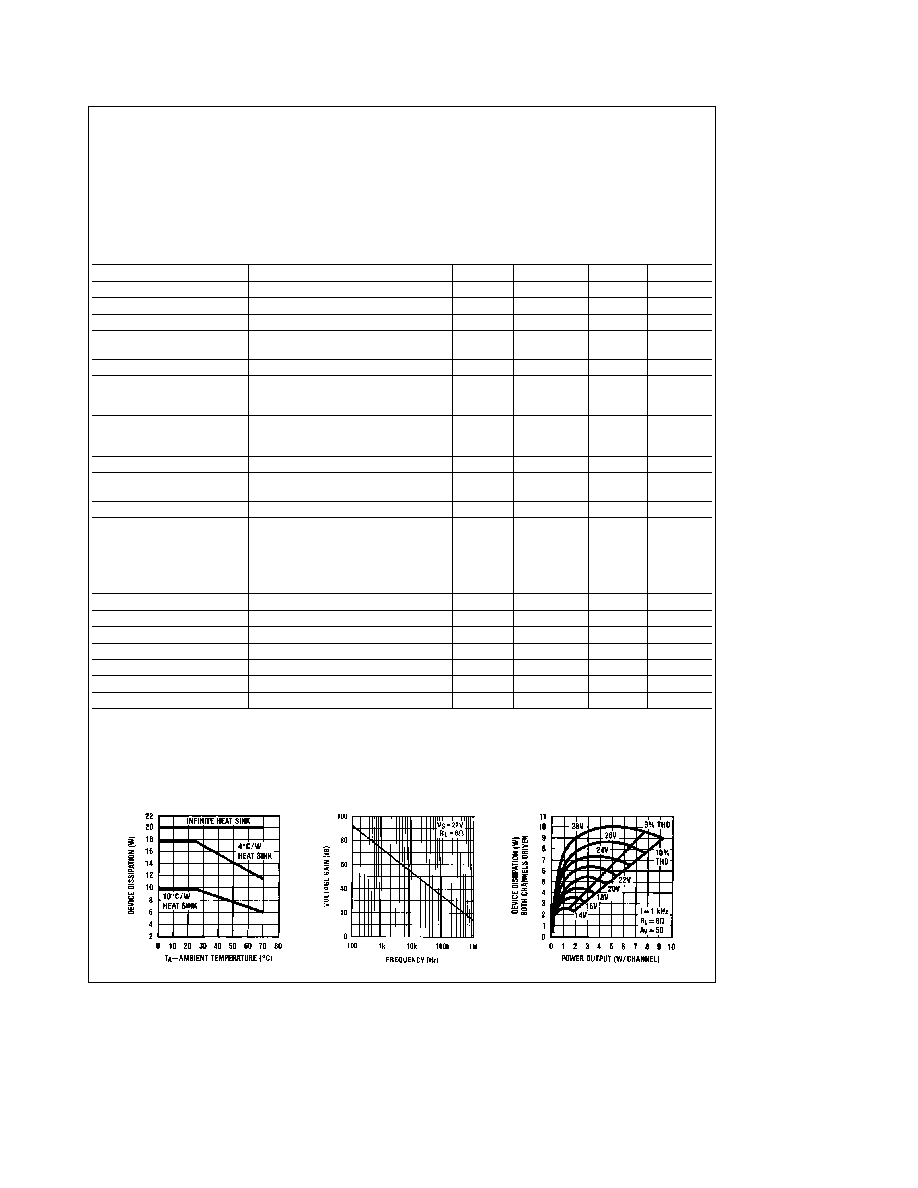
Absolute Maximum Ratings
If Military Aerospace specified devices are required
please contact the National Semiconductor Sales
Office Distributors for availability and specifications
Supply Voltage
35V
Input Voltage (Note 1)
g
0 7V
Operating Temperature (Note 2)
0 C to
a
70 C
Storage Temperature
b
65 C to
a
150 C
Junction Temperature
150 C
Lead Temp (Soldering 10 seconds)
260 C
ESD rating to be determined
Thermal Resistance
i
JC
1 C W
i
JA
43 C W
Electrical Characteristics
V
S
e
28V T
TAB
e
25 C R
L
e
8X A
V
e
50 (34 dB) unless otherwise specified
Parameter
Conditions
Min
Typ
Max
Units
Total Supply Current
P
O
e
0W
12
65
mA
Operating Supply Voltage
6
32
V
Output Power Channel
f
e
1 kHz THD
e
10% T
TAB
e
25 C
6
8
W
Distortion
f
e
1 kHz R
L
e
8X
0 05
1
%
P
O
e
1 W Channel
Output Swing
R
L
e
8X
V
S
b
6V
Vp-p
Channel Separation
C
BYPASS
e
50 mF C
IN
e
0 1 mF
f
e
1 kHz Output Referred
b
50
b
70
dB
V
O
e
4 Vrms
PSRR Positive Supply
C
BYPASS
e
50 mF C
IN
e
0 1 mF
f
e
120 Hz Output Referred
b
50
b
60
dB
V
ripple
e
1 Vrms
PSRR Negative Supply
Measured at DC Input Referred
b
60
dB
Common-Mode Range
Split Supplies
g
15V Pin 1
g
13 5
V
Tied to Pin 11
Input Offset Voltage
10
mV
Noise
Equivalent Input Noise
R
S
e
0 C
IN
e
0 1 mF
BW
e
20
b
20 kHz
2 5
m
V
CCIR
ARM
3 0
m
V
Output Noise Wideband
0 8
mV
R
S
e
0 C
IN
e
0 1 mF A
V
e
200
Open Loop Gain
R
S
e
51X f
e
1 kHz R
L
e
8X
70
dB
Input Bias Current
100
nA
Input Impedance
Open Loop
4
MX
DC Output Voltage
V
S
e
28V
14
V
Slew Rate
2
V ms
Power Bandwidth
3 dB Bandwidth at 2 5W
65
kHz
Current Limit
1 5
A
Note 1
The input voltage range is normally limited to
g
0 7V with respect to pin 1 This range may be extended by shorting pin 1 to the positive supply
Note 2
For operation at ambient temperature greater than 25 C the LM2879 must be derated based on a maximum 150 C junction temperature Thermal
resistance junction to case is 3 C W Thermal resistance case to ambient is 40 C W
Typical Performance Characteristics
Device Dissipation vs
Ambient Temperature
Open Loop Gain vs
Frequency
Power Dissipation vs
Power Output
TL H 5291 ≠ 3
2
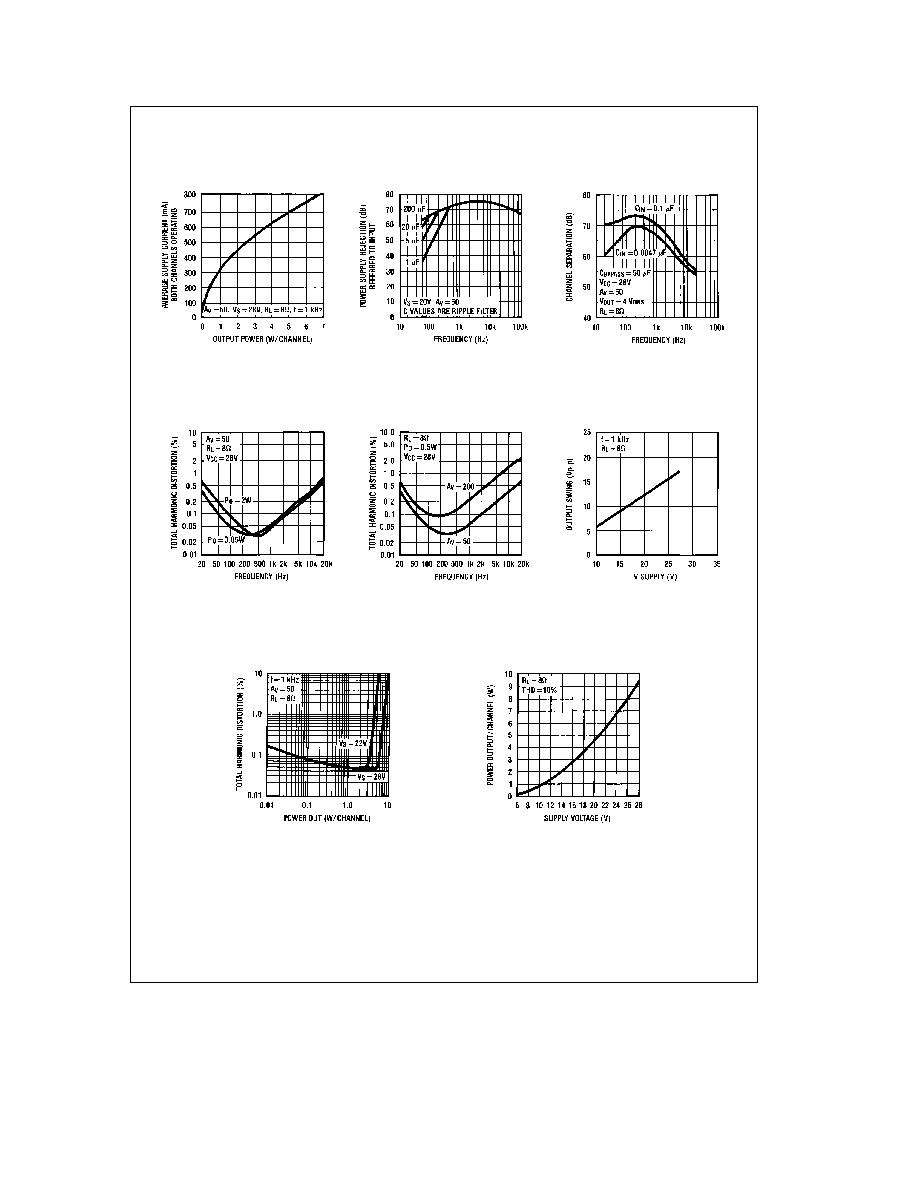
Typical Performance Characteristics
(Continued)
Supply Current vs Output
Power
Supply Rejection vs
Frequency
Channel Separation
(Referred to the Output)
Frequency
Total Harmonic Distortion
vs Frequency
Total Harmonic Distortion
vs Frequency
Output Swing vs V
S
Total Harmonic Distortion
vs Power Output
Power Output Channel vs
Supply Voltage
TL H 5291 ≠ 4
3
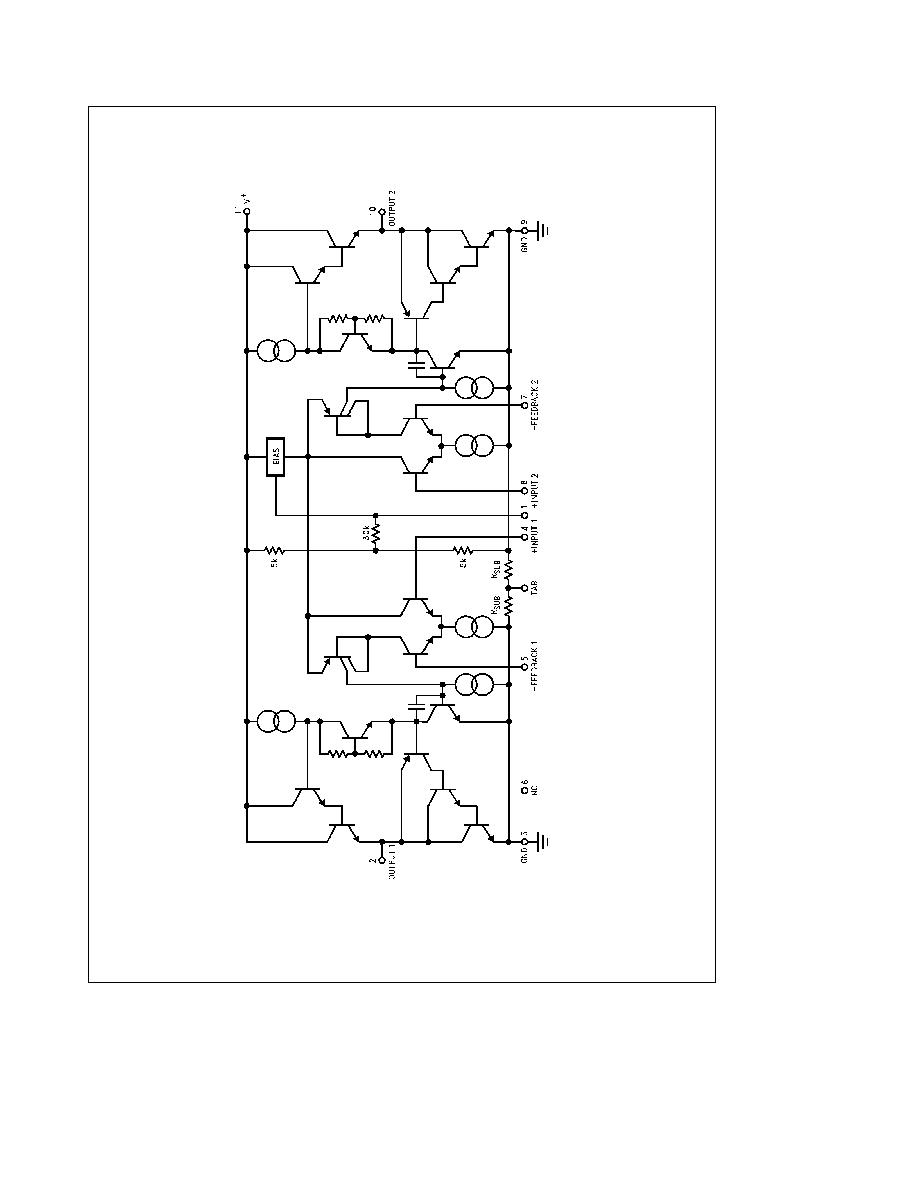
Equivalent Schematic Diagram
TLH5291
≠
5
4
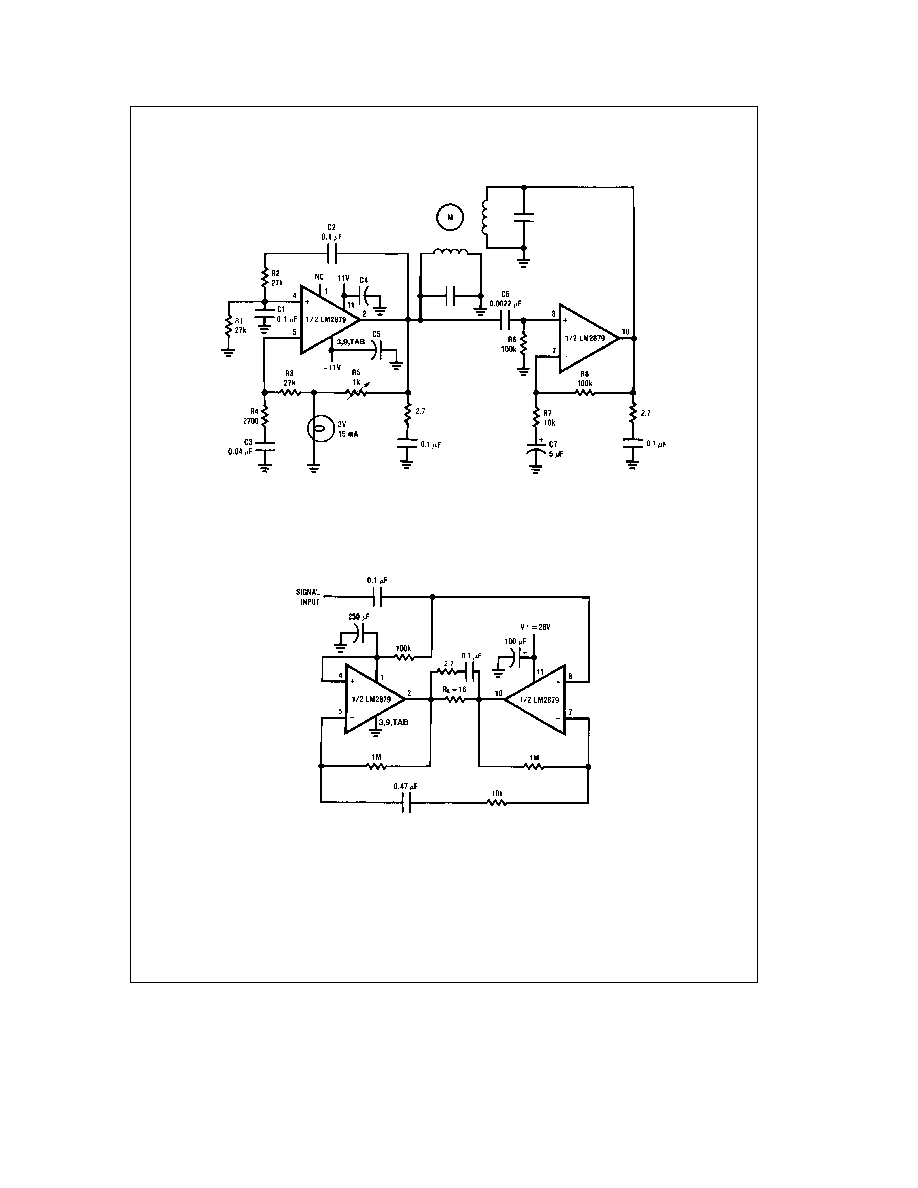
Typical Applications
Two-Phase Motor Drive
TL H 5291 ≠ 6
12W Bridge Amplifier
TL H 5291 ≠ 7
5




